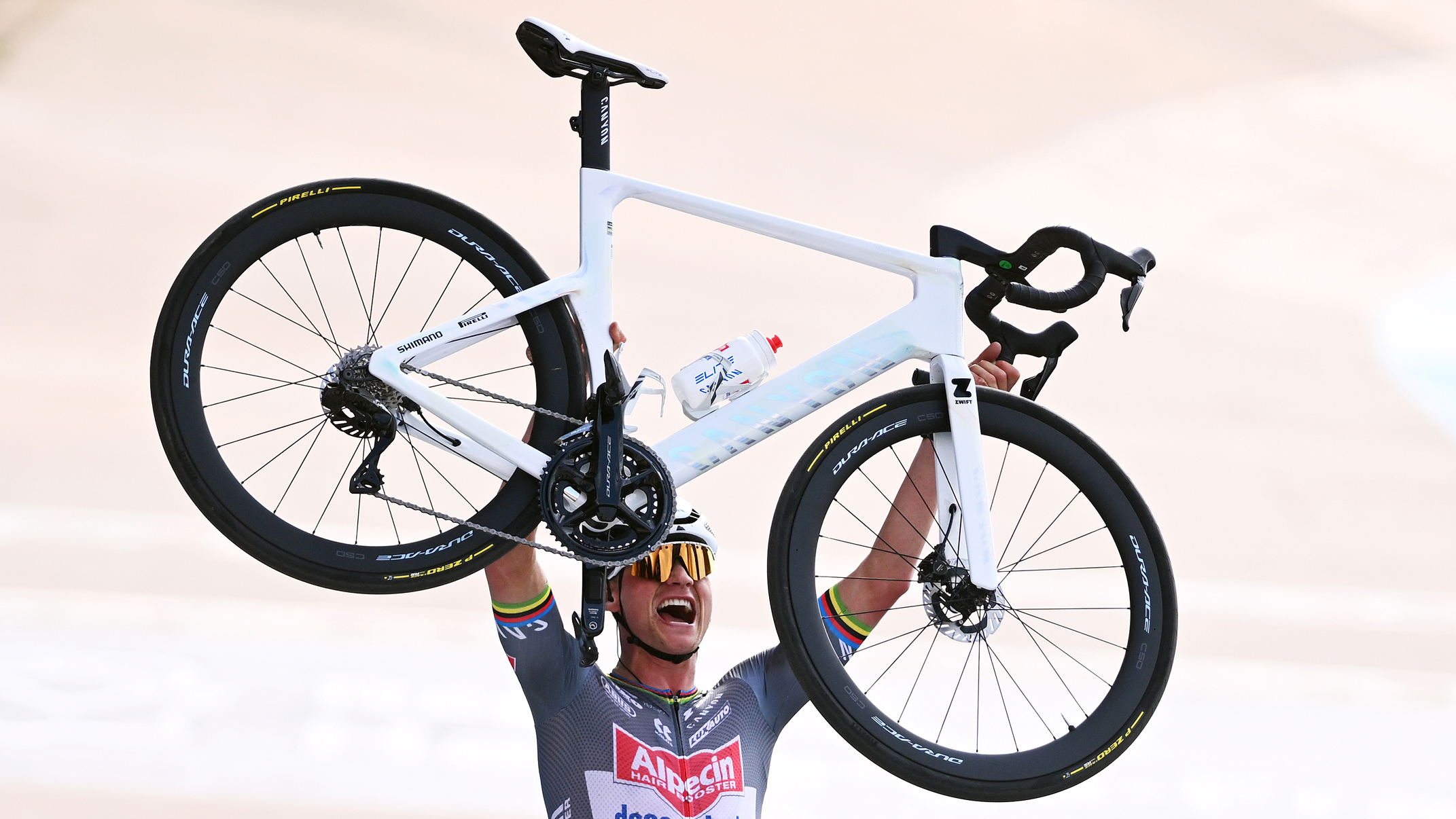Independent study suggests Notio aero-testing device is ‘highly reliable’ in measuring drag
New research by sport scientist and coach Mehdi Kordi validates Notio Konect's accuracy in the velodrome


Data from a new study on the Notio Konect – now called Notio Aerometer – suggest that the drag-measuring device is both reliable and sensitive. The study in the European Journal of Sport Science was led by Mehdi Kordi and conducted in an indoor velodrome with seven elite-level track riders.
PhD researcher Kordi has worked with British Cycling, English Institute of Sport and Huub Wattbike. In 2019 he started coaching the Dutch squad in preparation for the Tokyo Olympics and is regarded as one of the most influential and forward-thinking coaches in cycling, hailed by Dan Bigham as a “genius”.

Mehdi’s conclusions regarding the Notio – although not the first time it has been independently tested with no conflicts of interests – might be the ultimate validation for the device, which is designed to provide analysis of aerodynamic drag in real time. Using sensors integrated into a rod positioned in front of the bike including a pitot tube, barometer, accelerometer and gyroscope, the Notio connects via ANT+ with a power meter and speed sensor and can detect the effects of changes in a rider’s drag caused by different positions or equipment. It – and similar devices such as the Aeropod – have been called game changers for aero testing, since it can be accomplished without a wind tunnel. The Notio Konect/Aerometer costs around £950 from UK retailers.
Kordi split the experiment into two parts: reliability and sensitivity. For both parts of the experiment, he explains in his write-up, riders performed identical efforts, riding at ∼50kph for six laps of a 250m indoor velodrome. For reliability, the riders performed six efforts without any changes in position or resistance. For sensitivity, they performed the efforts with a rod with discs of a known diameters attached at each end to vary the CdA (drag coefficient) by a known amount.
For the reliability assessment, according to the study, low coefficient of variation of intra – (0.47%) and inter-effort (0.9%) reliability were measured. Mehdi found that with regard to sensitivity, the smallest changes in resistance (from 5-6cm, or 1.2% or 0.002m2) was identified by the Notio Konect.
Mehdi concluded that: “The data in this experiment suggest that the Notio Konect is highly reliable in measuring CdA … can detect changes up to at least 1.2% in an indoor velodrome using elite level track riders. Notio Konect is suitable for detecting small changes in aerodynamic drag in a velodrome setting.”
Mehdi’s findings appear to update those of a 2019 by Pedro L. Valenzuela et al, which found that “Notio appears to be reliable, strongly correlated to other established systems, and discerns large (upright vs aero) but not small (aero vs optimized aero) variations in riding position.”
The 2019 study noted that “further research is needed to confirm its validity in outdoor conditions," and Mehdi was also clear that his conclusions applied to an indoor velodrome.
Most recently ultrasonic sailing anemometers positioned at different points on the bike were used for outdoor aerodynamic testing by Dov Tate of Parcours wheels and Dr Steve Faulkner of Nottingham Trent University. According to Tate and Faulkner, this method was superior since it wasn’t limited to measuring the clean air at the front of the bike.
However, WorldTour road teams Trek Segafredo and Jumbo Visma have already announced partnerships with Notio, and Argon 18 recently tested a new road disc wheel with Notio (in an indoor velodrome).

Thank you for reading 20 articles this month* Join now for unlimited access
Enjoy your first month for just £1 / $1 / €1
*Read 5 free articles per month without a subscription

Join now for unlimited access
Try first month for just £1 / $1 / €1
Get The Leadout Newsletter
The latest race content, interviews, features, reviews and expert buying guides, direct to your inbox!
Simon Smythe is a hugely experienced cycling tech writer, who has been writing for Cycling Weekly since 2003. Until recently he was our senior tech writer. In his cycling career Simon has mostly focused on time trialling with a national medal, a few open wins and his club's 30-mile record in his palmares. These days he spends most of his time testing road bikes, or on a tandem doing the school run with his younger son.
-
 How do the pros train? Noemi Rüegg's 26 hour training week
How do the pros train? Noemi Rüegg's 26 hour training weekWinner of this year’s Tour Down Under, the EF Education-Oatly rider is a climber whose talent is taking her to the top
By Chris Marshall-Bell
-
 Save £42 on the same tyres that Mathieu Van de Poel won Paris-Roubaix on, this Easter weekend
Save £42 on the same tyres that Mathieu Van de Poel won Paris-Roubaix on, this Easter weekendDeals Its rare that Pirelli P-Zero Race TLR RS can be found on sale, and certainly not with a whopping 25% discount, grab a pair this weekend before they go...
By Matt Ischt-Barnard